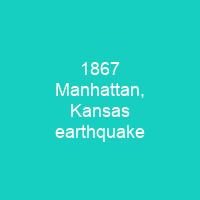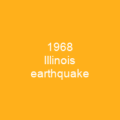The 1867 Manhattan earthquake struck Riley County, Kansas, in the United States on April 24, 1867. It measured 5. 1 on a seismic scale that is based on an isoseismal map or the event’s felt area. Felt over an area of 200,000 square miles, the earthquake reached the states of Indiana, Illinois, and possibly Ohio. It remains the largest earthquake to originate in the state, though at least 25 have taken place since.
About 1867 Manhattan, Kansas earthquake in brief

The 1867 earthquake followed the Midcontinent seismic trend: unlike coastal earthquakes in the. United States, events in the central and east-central sectors of the country are spread out over extensive areas. This occurs as a result of the region’s stiff soil, and because earthquakes in Kansas tend to occur at a shallow depth. The Nemaha Range lies roughly 50 miles east of the midcontinent rift, which forms a layer of basaltic rock about 1. 1 billion years old. It hosts the Humboldt Fault Zone, which, in addition to serving as the range’s easternmost boundary, has produced a large portion of the state’s earthquakes. The fault is responsible for at least several small tremors smaller than magnitude 2. 7 each year. It is also present in the Central Kansas Uplift, the faults of which produced several small earthquakes during the late 1980s. According to a report in the Bulletin of the Seismological Society of America, the frequency of moderately strong earthquakes within the state is between 40 and 45 years.
You want to know more about 1867 Manhattan, Kansas earthquake?
This page is based on the article 1867 Manhattan, Kansas earthquake published in Wikipedia (as of Nov. 03, 2020) and was automatically summarized using artificial intelligence.







